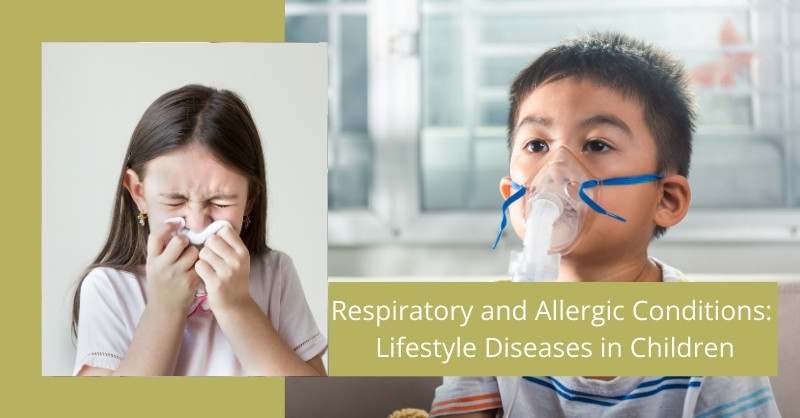Understanding Lifestyle Diseases in Children
Lifestyle diseases in children are becoming a growing concern worldwide. These diseases, often associated with adults, are increasingly affecting children due to shifts in dietary habits, reduced physical activity, and exposure to unhealthy environments. Conditions such as childhood obesity, Type 2 diabetes, childhood hypertension, and mental health disorders are now prevalent in younger populations, threatening their future health and well-being.
The rise of these diseases reflects the need for urgent attention. Addressing lifestyle diseases in children requires a comprehensive understanding of their causes, symptoms, and long-term impact. By fostering healthier habits, we can safeguard the next generation from preventable health issues.
Common Lifestyle Diseases in Children
Some of the most common lifestyle diseases in children include:
- Childhood Obesity: High childhood obesity rates are linked to poor dietary habits, lack of physical activity, and excessive screen time.
- Type 2 Diabetes: Childhood diabetes, particularly Type 2, is a growing concern linked to obesity and inactivity.
- Hypertension and Cholesterol: Childhood hypertension and elevated cholesterol levels are early indicators of potential cardiovascular issues in adulthood.
- Respiratory and Allergic Conditions: Childhood asthma and allergies are exacerbated by environmental factors and unhealthy diets.
- Mental Health Issues: Anxiety, depression, and other mental health disorders in children are increasingly tied to sedentary lifestyles and poor nutrition.
Causes of Lifestyle Diseases in Children
The causes of lifestyle diseases in children are multifaceted and often interconnected. Key contributors include:
- Poor Nutrition: The widespread availability of processed foods and sugary drinks has a profound impact on children’s health. Childhood nutrition deficiencies are often masked by calorie-rich but nutrient-poor diets.
- Physical Inactivity: Sedentary behaviors, such as prolonged screen time and limited opportunities for outdoor play, significantly reduce physical activity levels in children.
- Excessive Screen Time: Screen time and children’s health are closely linked. Excessive use of electronic devices contributes to physical inactivity, disrupted sleep, and even mental health challenges.
- Sleep Disorders: Irregular sleep patterns and insufficient rest contribute to sleep disorders in children, which are often exacerbated by late-night screen use.

Signs and Symptoms of Lifestyle Diseases in Children
Recognizing the early signs of lifestyle diseases in children is crucial for timely intervention. Parents and caregivers should look for symptoms such as:
- Rapid weight gain or obesity
- Frequent fatigue or lack of energy
- Shortness of breath or difficulty in physical activities
- Unusual eating patterns or cravings
- Changes in mood, behavior, or academic performance
- Complaints of headaches or unexplained body pain
Early detection and prompt medical consultation can help manage and mitigate these issues before they escalate into chronic conditions.
Preventative Measures for Lifestyle Diseases in Children
Preventative healthcare for children plays a vital role in combating lifestyle diseases. Here are some effective strategies:
1. Promoting Healthy Eating Habits
Healthy eating habits for children are foundational to preventing lifestyle diseases. Parents can introduce balanced diets that prioritize fresh fruits, vegetables, whole grains, lean proteins, and healthy fats. Reducing sugar and processed food intake is equally important. Educating children about the importance of nutrition empowers them to make better dietary choices.
2. Encouraging Physical Activity
The importance of physical activity in children cannot be overstated. Engaging in regular exercise helps maintain a healthy weight, strengthens bones and muscles, and boosts mental health. Parents should encourage activities such as sports, cycling, swimming, or even simple outdoor play to ensure children stay active.
3. Limiting Screen Time
Establishing screen time limits for children is essential. Excessive screen exposure not only contributes to inactivity but also impacts mental health and sleep quality. Setting boundaries and encouraging non-screen-based hobbies can significantly benefit children’s overall well-being.
4. Building Healthy Sleep Habits
Adequate sleep is critical for children’s growth and development. Parents should establish consistent bedtime routines, limit screen use before sleep, and create a calming sleep environment to prevent sleep disorders in children.

The Role of Parents in Preventing Lifestyle Diseases in Children
Parents are instrumental in shaping children’s habits and behaviors. Their involvement can make a significant difference in preventing lifestyle diseases. Here’s how parents can help:
Modeling Healthy Behaviors
Children often emulate their parents. By adopting a healthy lifestyle, parents set a positive example that encourages their children to do the same.
Providing Nutritional Education
Teaching children about the benefits of nutritious foods and involving them in meal planning and preparation can foster lifelong healthy eating habits.
Creating Opportunities for Activity
Parents can organize family activities, such as hiking, biking, or group sports, to make physical activity a fun and integral part of daily life.
Encouraging Open Communication
Discussing the importance of health openly and addressing any concerns children may have about their well-being builds trust and awareness.
Long-Term Impact of Lifestyle Diseases in Children
Left unchecked, lifestyle diseases in children can have severe long-term consequences. These include increased risk of cardiovascular diseases, diabetes, and mental health issues in adulthood. Additionally, the burden of managing chronic illnesses can impact their quality of life and productivity.
However, with the right interventions, these outcomes can be prevented. Early education, regular health check-ups, and a supportive environment are key to ensuring a healthier future for today’s children.
Conclusion
Lifestyle diseases in children are a pressing issue that demands collective action. By fostering healthy habits, limiting risk factors, and promoting awareness, parents, educators, and healthcare providers can work together to combat these challenges. Protecting your child’s future begins with the choices made today. Let’s prioritize their health and well-being to ensure they grow into thriving, resilient adults.
Read this Article: 
Read this Article: 



